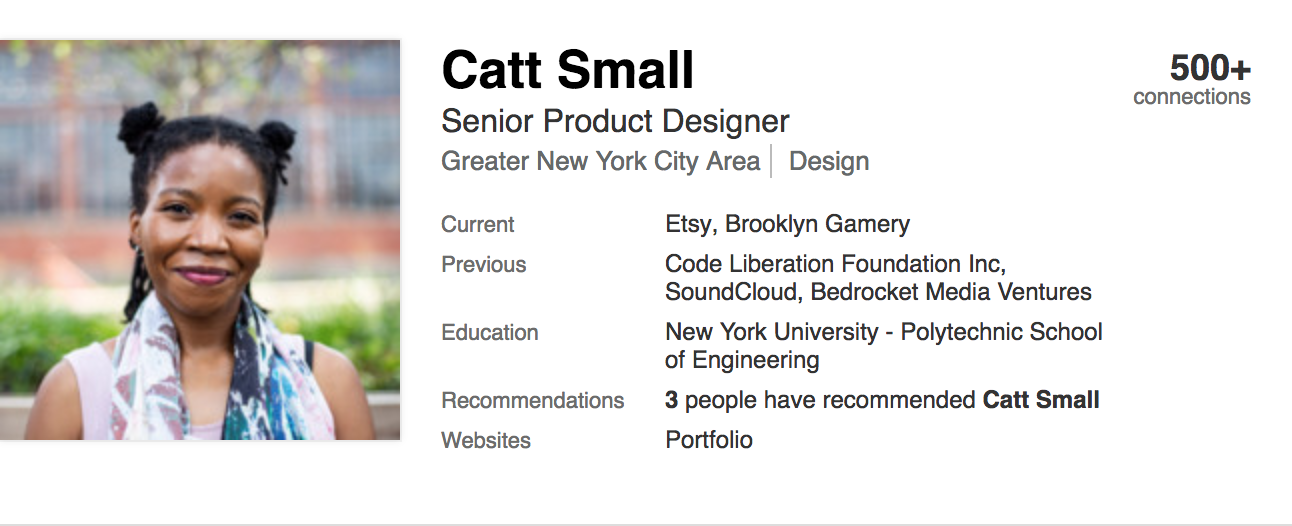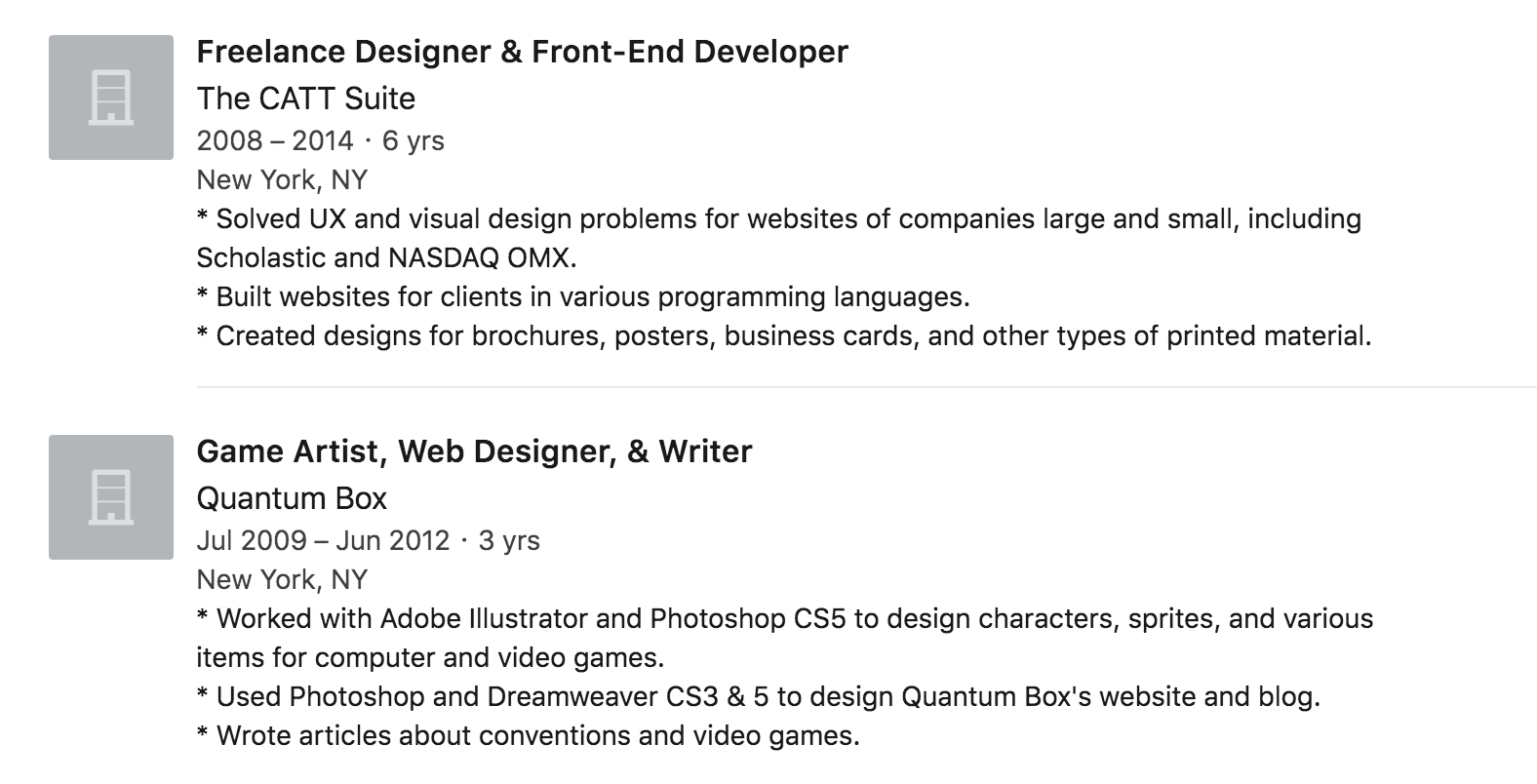Impress for success: Strategic ways to seem more hireable
Job hunting is stressful, exhausting, and ultimately humiliating. One can submit hundreds or thousands of applications only to hear back from a few, if any, employers. The worst part is that you’re probably an amazing person, but those in power can’t see that.
Unfortunately, the systems used to find gainful employment are often devoid of humanity. It’s up to you to convince employers that you’re worth hiring – especially when you’re looking for a more junior role. Let’s talk about what this means.
What does someone worth hiring look like?
As a hiring manager, I look for several qualities in a person. Employees must be reliable; I need to trust them to finish requests in a timely, astute manner. The right candidate can show their ability to comprehend requests, prioritize them, and deliver them within the requested time frame. While good hiring managers know new hires need time to understand the employer’s context, a great candidate will be able to estimate the time necessary to complete their tasks and adapt as necessary.
The right candidate is also mature enough to get along with others without destroying morale, even in times of conflict. This is not the same as “culture fit”, nor do good hiring managers use this criterion to discriminate against awkward or pessimistic people. Sadly, many employees interact more often with each other than most other people in their lives. Someone who can stay positive and motivated is crucial for a healthy work environment.
The next quality is related to maturity: a great candidate is also meticulous enough to notice and prioritize the minor details that lead to better outcomes. While I want someone who can help keep the peace when trouble arises, people who can respectfully and constructively provide criticism that improves results are infinitely valuable. Detail-oriented people are less likely to accept or deliver mediocre work, especially when they are given the right tools.
Finally, I seek people who are knowledgeable enough about their role to complete most of their work without constant direction, but also curious enough to continue learning and improving. Someone who knows 80% of the required skills and is excited to learn the final 20% is often a better investment than spending months (or years, not joking) shuffling through people to find that single nonexistent person who magically meets all the requirements. A good hiring manager understands that the perfect candidate does not exist and is willing to invest in their employees’ blind spots so they can improve.
Conveying your work ethic online
Review your online presence, résumé, and cover letter to see how you align with the examples of qualities employers might be seeking. If you find yourself without a lot of positive responses to job applications, it’s possible that potential employers are missing what makes you special. You can make several quick, strategic edits to become more hirable.
Get good at LinkedIn and Glassdoor
As much as people hate online resume websites, they serve a purpose for both job seekers and hiring managers. LinkedIn is one of many places internal company recruiters go to source candidates personally. Many employers also use search engines to research prospective candidates. A detailed profile will garner more views and appear higher in search engines when people look for you.
The first thing people will see when they look at your profile is your name and photo. Your photo will be one of many factors they use to judge your capabilities. Whether your profile image is a photo or a drawing, a good one makes you look approachable. That includes things like a confident smile, eye contact, good lighting, and professional attire.

My first LinkedIn image was a caricature of me smiling excitedly. While I wasn’t making eye contact with viewers, I looked like a person who wanted a job and the use of a funny drawing helped to set me apart from other digital designers.

My current LinkedIn photo includes all of the aforementioned things.
Next is your job title and summary description. Use the job title to explain your current role. If you don’t have one, list the job you are seeking.
In terms of the summary, a good description is accurate and confident. Avoid downplaying or overestimating your skills. Below are some examples of great descriptions as of the time this article was published.
New York City and Philly based product designer and producer who aims to create meaningful experiences and user-friendly products that her clients enjoy today. In her spare time, she enjoys playing video games, educating, and learning the latest industry trends.
From Kim Torres
I am a software Quality Assurance maven, currently working with Etsy toward its vision of reimagining commerce. My passion for QA began during my last year of college when I helped others to qualify their capstone projects. I believe that Quality Assurance is not just about test execution, planning or bugs, it is about bringing a business idea to fruition in the best way possible.
From Arylee McSweaney
Build, solve, and question. These are the verbs I’d use to describe my day-to-day and what I love most in my field of work. Building something worthwhile and coming out of a project with more knowledge than when I started is what I strive for.
From Chris Roggi
Once you have a summary, look over your experience. If it looks like a list without any context, you’re going to need to do some work. This is your digital résumé, so treat it like one. Write down relevant tasks you did at each of your previous jobs. If you haven’t had an official position yet, think about projects you’ve done for friends or family members. List those as freelance work. If you consistently work on collaborative projects with the same people, create a collective entity that you can list as a company.

I had lots of collaborators as part of the Quantum Box collective and had various freelance clients, some of whom were family friends.
As you can see from my examples, the goal is not to fabricate experience. You need to package your work history in a way that is comprehensible for employers. And if the above nets you nothing, you can always use the projects feature to showcase your solo work. When writing work experience, be sure to pay particular attention to your grammar. Use past-tense verbs for previous positions and current-tense verbs for anything you are actively doing. Finish each line with a period (or don’t!), and remember to confirm that every line actually has (or doesn’t have!) a period at the end. Center your actions by refraining from using passive verbs. For example, instead of saying you “were assigned” something, say you “focused on” it. Also use this as an opportunity to increase your eloquence: “collaborated” sounds better than “worked with”, and “contributed to” is slightly more descriptive than “worked on”.
Convincing profiles also have recommendations from people the prospective employee knows and has worked with. This includes former co-workers but also people you’ve assisted in any relevant capacity. For example, if you worked on a project for a friend or family member, you can ask them to recommend you for that freelance role you should’ve created. The point is to show your character and work ethic. Who knows that better than the people you trust most?

This recommendation is short and direct. It’s also ten years old – Mark hired me for my first web design internship in 2008!
Finally… Please, please, PLEASE: get yourself a custom profile URL. It’s free and easy to do. This shows that you’re a detail-oriented professional who isn’t okay with an ugly, hard-to-recall URL. Meticulousness is one of the things i mentioned above. Fixing up the little things will underscore that you have this exact quality.
Social media dangers
As shown by the powers if LinkedIn, social media can be your friend and your enemy. People will not just locate your LinkedIn but also any other accounts that use your name. They will judge you for your posts from five days ago and maybe even five years ago. If your old words may be damaging, consider using a service like Forget to scrub irrelevant posts and changing your privacy settings on Facebook. Lock down your unfortunate past self or suffer the consequences.
Getting creative to get a job
Now that you’re squeaky clean and well-packaged, it’s time to get you a job. You’ve been applying for a while without luck. Is that because you’re only relying on formal applications? Well, stop that.
While a fair amount of hires do come from formal applications, many others come from additional routes like employee referrals, meetups, and job fairs. In my experience, way fewer come from techniques I’ve seen “go-getters” suggest such as cold emails to irrelevant employees (spam) or unsolicited résumés in-person (IRL spam). Here are some ways to put yourself out there without looking silly.
Events like meetups and job fairs are great way to meet potential employers. You are more likely to connect with someone and convey all the qualities I mentioned above if you are not one of 600 digital files someone needs to review. While job fairs are incredibly straightforward, every industry meetup I have ever attended or organized included at least one person who was looking to hire people. Industry meetups are usually either run by hiring companies or have a scheduled time during each event for job announcements. Try out a few and see if you can get any leads!
Another great way to find opportunities is by directly reaching out to recruiters or people in other relevant roles at your favorite prospective companies. For example, if I wanted to work at Evernote, I would first look for information about their team. I would try to locate the names of a recruiter and perhaps a person in a more senior role that is relevant to the position I want. I would then invite them to connect on LinkedIn and ask them to coffee. I would also suggest they might be eligible for a referral bonus in return if they were not a recruiter and Evernote offered that benefit. This approach is more likely to result in a successful referral, and referrals are much more likely to result in a successful hire.
If you still don’t get any bites despite all your effort, you may need to build relevant job experience through unconventional means. Seekers of telecommute-friendly jobs can make use of freelancing and gig economy websites like Upwork, Freelancer.com, Fiverr (ugh), and TaskRabbit (we do what we must). Searching for hashtags like #freelancejob and #remotejob on social networks can also reveal potential opportunities. As previously mentioned, help your friends and family, then ask them to write recommendations on LinkedIn. If you’re looking to work in tech, go to hackathons and volunteer your skills for short projects. You can also gain skills at your current job by helping out in relevant capacities.
That’s it!
Getting a job is hard work. I hope this helped you feel more encouraged and gave you some new techniques to try. You should never give up on the job you want, but we live in an increasingly competitive world. We all must find creative ways to move toward our ideal futures.
Upcoming talks
-
Staff designer: Grow, influence, and lead as an individual contributor
At some point in your career, you'll likely have to choose between senior individual contributor (IC) and design management roles. But what if you don't want to manage others? What if you’d rather continue as an expert contributor? In this talk, we’ll take a deep dive into staff/principal designer roles—a combination of team leadership and in-the-pixels design work—all without any direct people management. Learn how you can advocate for, grow into, and succeed in such IC leadership roles.
Want to talk?
Got feedback, looking to suggest a future writing topic, or want to invite me to speak at your organization? Send me a message and I'll get back to you as soon as possible!